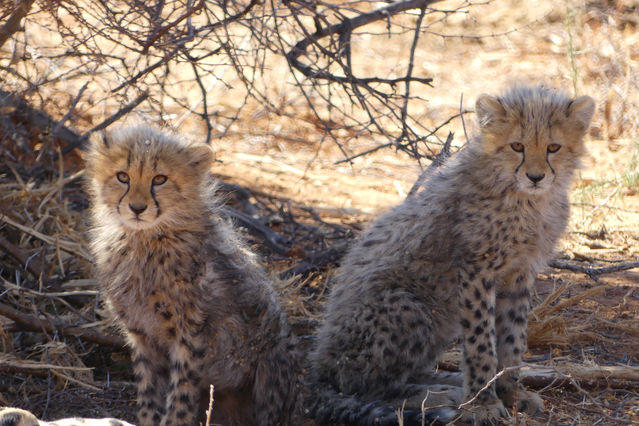
Reproductive System

In order for any organism to exist, the process of reproduction must occur in order to produce offspring that can carry on their generation. In the majority of species, reproductive succession is first and foremost determined by the nutrition and food that's accessible (Sadlier, 1969). It is known that the gestation period for cheetahs is approximately three months (Kelly, M.J., Laurenson, M.K., FitzGibbon, C.D., Collins, D.A., Durant, S.M., Frame, G.W., Bertram, B.C., and Caro, T.M. (1998).
Female Cheetah

As mentioned before, the female cheetah’s gestation period is about three months and so during that time, it not only undergoes major hormonal changes, but it also undergoes major physiological changes and so let’s take a closer look at what actually happens. Cheetah’s reproductive system is very similar to that of humans considering that they both belong in the class Mammalia. The female cheetah’s reproductive system is composed of numerous internal reproductive organs such as the vulva, cervix, vagina, fallopian tubes, uterus, and ovaries. The fallopian tubes, also known as oviducts, are the small tubes that bridge the ovaries to
the uterus. The cervix is located at the end of the uterus which differentiates the uterus in distinction from the vagina and it serves a great function to blockade in case of infection. Extending out of the
cervix is the vagina, a fibrous tube, which conjoint with the vulva, the outermost window for the female genitalia. Each ovary is connected to the oviduct. Following the menstruation period, the mature eggs are moved to the uterus by way of oviducts. The process of secreting fluid is very important because it does few important steps first of which is, it gives the eggs a habitable domain so that they can thrive; Secondly, it helps with fertilization of the eggs; Lastly,
the secreted fluid serves as an important initial step for embryonic life. Furthermore, the cervix and uterus are too need to function properly because it serves as an essential step for the initiation and continuation of gestation. Though there may be many reasons why a cheetah might not be able to reproduce, one of which could be due to infection which can result in the female cheetah being infertile and this could be due to the cervix not functioning properly which can obstruct the purpose of the uterus. If everything does function as it supposes it, then the vagina and the vulva will be the final passage of which the cubs will come out from.
Male Cheetah

Although the male cheetah’s reproductive system isn't as interesting as the female cheetahs, they still go through a transitional stage and so lets step through it. The male cheetah’s genital tract consists of the prostate gland, vas deferens, testicles, scrotum, and penis. In a nutshell, the main function of the male cheetah’s genital tract is to lay out a passageway for the sperm. The epididymis bridges the testicles to the ductus deferens, which transfers ejaculated sperm to the urethra (Momont 2018). The epididymis is needed for the maturation of
the cheetah sperm and is stored there. The prostate is an additional sex gland that produces the moisture part of the semen. Although cancer and inflammation of the reproductive organs can be located by way of new technologies, the reproductive tract disease in male cheetahs is fairly unusual.





